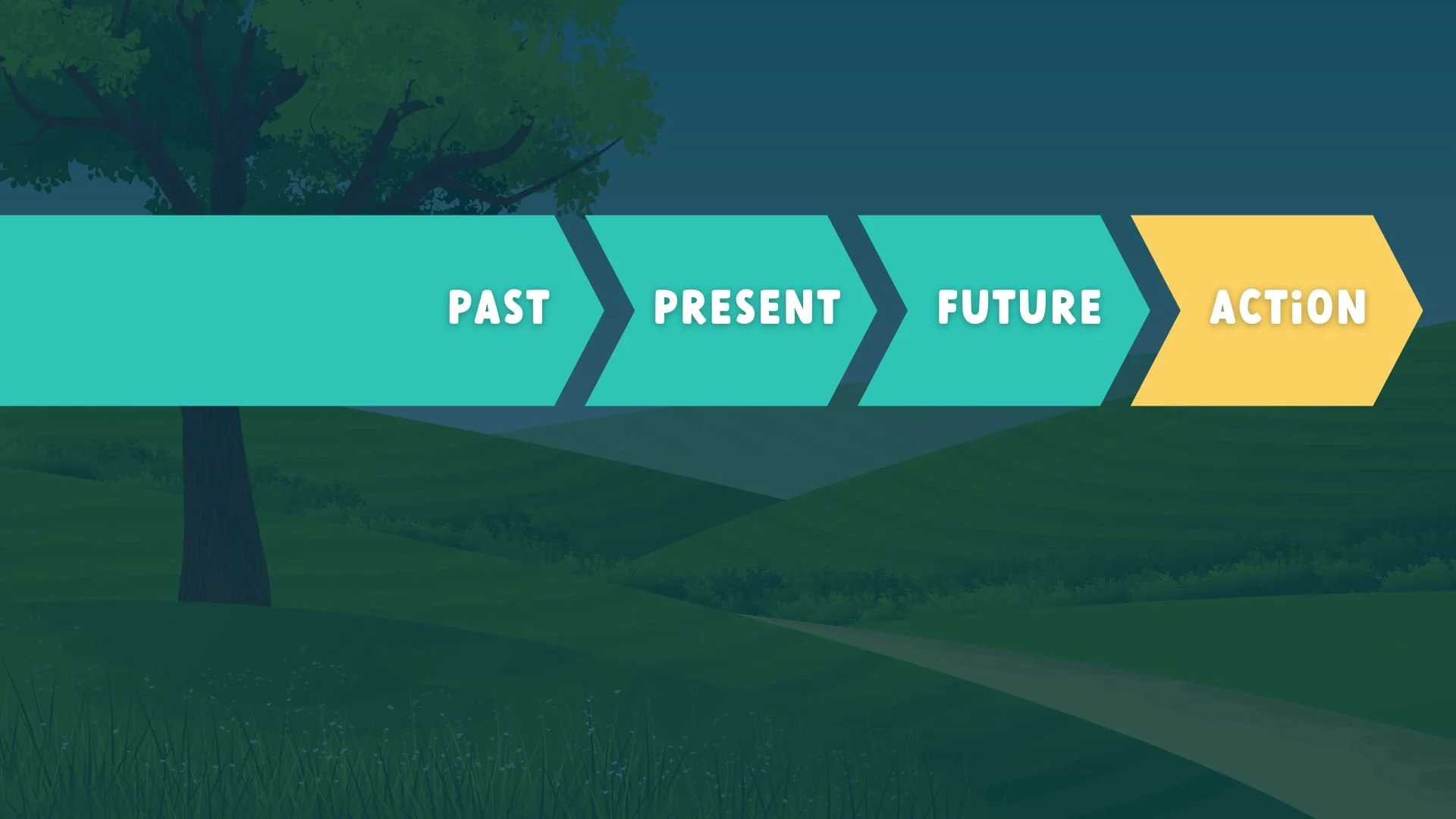Looking Back to Move Forward: Future Search as a Meeting Arc
A well-designed meeting follows an arc.
In other words, each part of the meeting builds on the part before it. The outputs of one activity flow into the inputs for the next. Understanding this basic premise is truly one of the keys to designing meetings that work.
In strategic planning meetings, we borrow ideas from Future Search, a meeting design book written by Marvin Weisbord and Sandra Janoff in 1999. Future Search is a strategic planning and group facilitation process designed to help organizations and communities address complex issues and create a shared vision for the future. The process consists of six essential steps:
Get the right people in the room.
Understand the history, current situation, and key dynamics of the system or issue at hand.
Identify common ground.
Create a shared vision.
Develop action plans.
Commit and follow up.
Done as intended, Future Search is a conference model that takes two and a half days involving a diverse group of stakeholders in a facilitated workshop. Multi-day conferences away from the office help groups step out of working “in” the business and take time to learn from and work “on” the business, a principle from the book The Primes written by Chris McGoff.
Past, Present, Future, Action
In its most simplified form, the Future Search model can be thought of as working from past to present to future and ending with action. This simple workflow is great for strategic planning sessions because we have to come to terms with the past before we can agree on current realities. We learn from current realities in order to envision a new future, and we plan action based on this vision.
Unsuccessful strategic planning meetings often fall apart because the group gets ahead of itself. Often, a leader has pushed the group toward a vision or action when they haven’t had time to digest the past or present. This is especially difficult when the group or organization has experienced significant conflict or change and, from a psychological standpoint, simply isn’t ready to move forward.
If you don’t have two and a half days, do some of the “past” and “present” work ahead of time through a pre-meeting survey, interviews or other form of data gathering. Then, start the meeting with a review of themes from the data followed by a brief discussion and clarifying questions.
You can read about an example of this in our latest meeting story. If you’d like a quick email template with sample questions, you can borrow ours using the form below.
The Bridges Model for change helps clarify why it’s important to unpack the past before moving forward. Developed by William Bridges, the Bridges Model is a framework for effectively managing organizational and personal transitions. It consists of three key stages: Endings, Neutral Zone, and New Beginnings.
“Endings”: acknowledge and let go of old ways, roles or structures that are no longer relevant or sustainable.
“Neutral Zone”: navigate the discomfort and ambiguity of the transition during a period of uncertainty and exploration.
“New Beginnings”: embrace and implement new practices, roles or strategies.
The model highlights the importance of managing the emotional and mental aspects of change and helps navigate transitions with resilience and adaptability. It emphasizes the importance of working through the past and building understanding in facilitating successful transitions and growth.
Future Search and Beyond
You can see Future Search in other well-known models for meetings and organizational change. One that we love and use frequently is the Strategic Visioning Framework from The Grove Consultants International.
Video walk-through by Lauren of The Grove’s Strategic Visioning Framework model.
After watching this, you can probably see the connection between Strategic Visioning and Future Search. In short, we have to understand the past and agree on the present in order to create a vision and actions that stick.
This article contains affiliate and/or compensated links. For more information, visit our Terms and Conditions.
Want help with your next strategic planning meeting using the future search meeting arc?
Partner with one of our Meeting Coaches, and they will walk you through the process of planning the meeting, design meeting materials, and give you guidance and techniques for leading the meeting.

